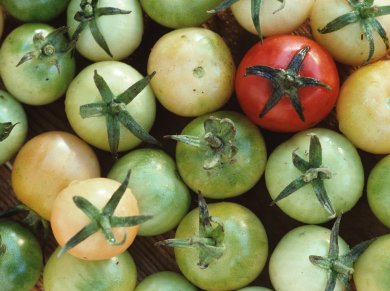The concentrations of a range of compounds found in tomatoes have been analyzed at 11 stages of ripeness, these include:
- free amino acids,
- phenolic compounds,
- pigments chlorophylls a and b,
- the carotenoids β-carotene and lycopene, and
- the glycoalkaloids α-tomatine and dehydrotomatine.
The team led by Mendel Friedman, U.S. Department of Agriculture, California, USA, and co-workers from Seowon University, Republic of Korea found that the most significant changes in composition occur as the tomato begins to turn from green to red.
At this point, free amino acids reach a maximum, chlorophyll concentrations decrease, carotenoids begin to appear, phenolic compounds isomerize and start to decrease, and glycoalkaloids are almost completely absent.
Glycoalkaloid-rich extracts of green tomatoes were also shown to inhibit several cell lines, including lung cancer (A549) and cervical carcinoma (HeLa) cells.
- Changes in Free Amino Acid, Phenolic, Chlorophyll, Carotenoid, and Glycoalkaloid Contents in Tomatoes during 11 Stages of Growth and Inhibition of Cervical and Lung Human Cancer Cells by Green Tomato Extracts
S.-H. Choi, S.-H. Lee, H.-J. Kim, I.-S. Lee, N. Kozukue, C. E. Levin, M. Friedman,
J. Agric. Food Chem. 2010, 58.
DOI: 10.1021/jf100162j


